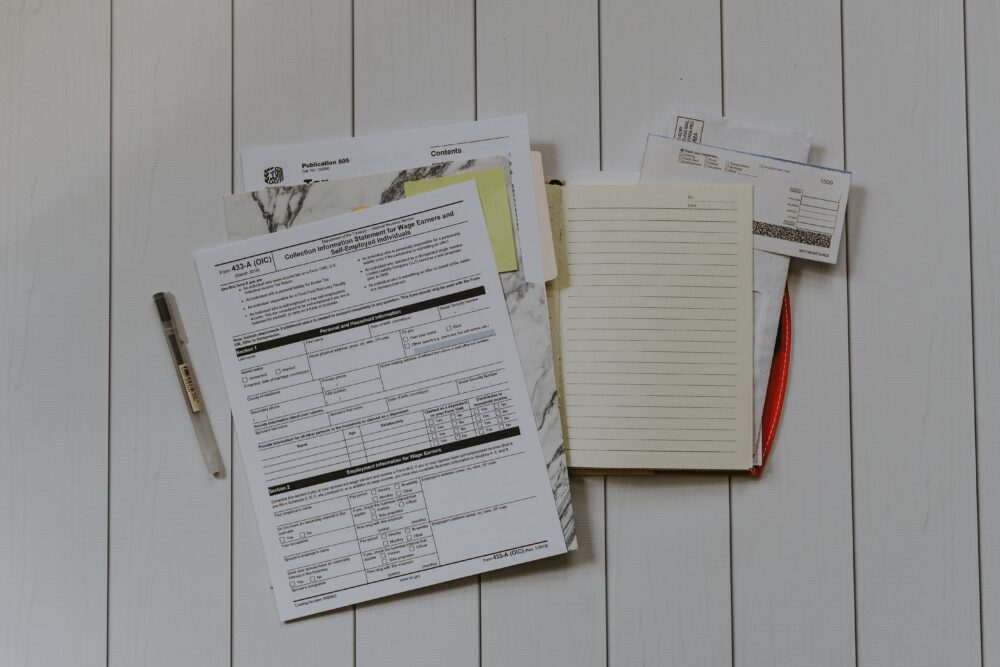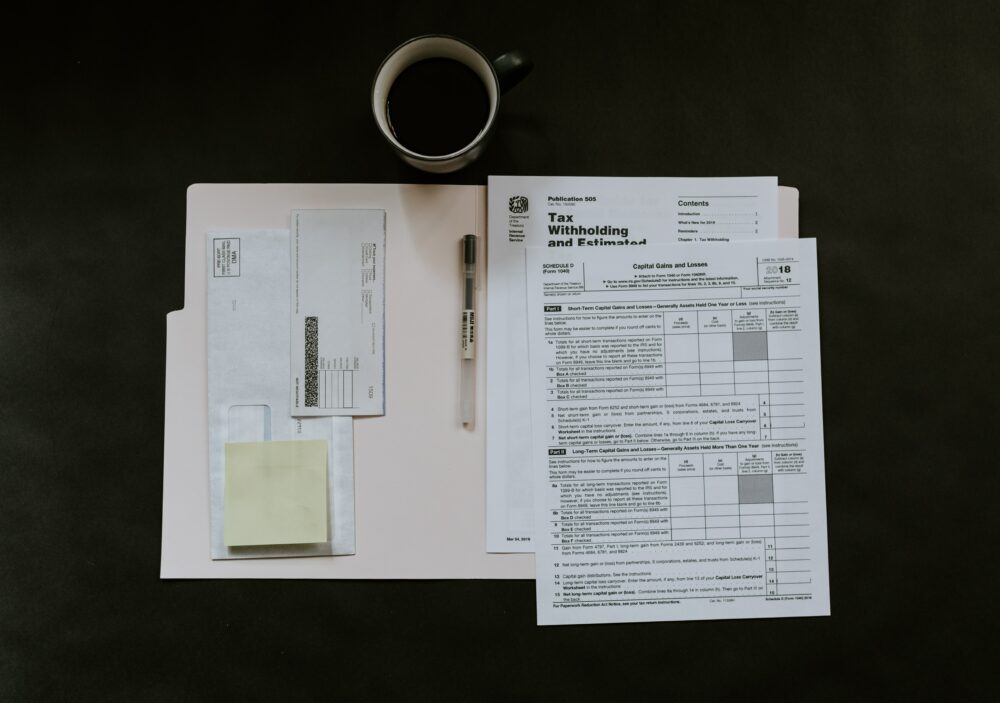
How to Avoid Paying Taxes as an Independent Contractor?

As an independent contractor, you are responsible for paying your taxes. This can be daunting, especially if you’re unsure how to do it. This post will give you a few tips on avoiding paying taxes as an independent contractor. Remember that each situation is unique. So speak with a tax specialist if you have any questions.
Learn how to obtain self-employment insurance in your field:
Freelance Disability Insurance | Freelance Ghost Insurance | Freelance Workers Comp Insurance | Freelance Critical Illness Insurance | Freelance E&O Insurance | Freelance Airbnb Host Insurance | Freelance Commercial Auto Insurance | Freelance Commercial Property Insurance | Freelance Utah Home Insurance | Freelance Amazon Flex | Freelance Carpet Cleaning Insurance | Freelance Window Cleaner Insurance | Freelance Pressure Washer Insurance | Freelance Electrician Insurance | Freelance Mechanic Insurance | Freelance Junk Removal Insurance | Freelance Bartender Insurance | Freelance Hair Stylist Insurance | Freelance Barber Insurance | Freelance Taskers Insurance | Freelance Web Designer Insurance | Freelance Doordash Driver Insurance | Freelance Uber Driver Insurance | Freelance Plumber Insurance | Freelance Writer Insurance
What is Self-Employment Tax? – Paying Taxes as an Independent Contractor
As a self-employed individual, it is essential to understand what self-employment tax is and how it works. Self-employment tax is a tax that covers Social Security and Medicare contributions for self-employed individuals. To calculate self-employment income tax, you must first determine your net earnings. Net earnings from self-employment are calculated by subtracting business expenses from your gross income. Once you have calculated your net profits, multiply that number by 92.35% to get your self-employment income tax liability.
How Does Self-Employment Tax Work?

In addition to paying the entire 15.3% self-employment tax liability, self-employed individuals are also responsible for paying the employer portion of the tax liability. This tax portion is 6.2% for Social Security and 1.45% for Medicare. The employer portion of the tax is not subject to a wage base limit like the employee portion is.
Self-employed individuals, including single-member LLC entities, must pay their self-employment taxes quarterly using Form 1040-ES, Estimated Tax for Individuals. Estimated taxes are taxes paid before the actual taxable event (in this case, year-end). This allows taxpayers to spread their tax liability over the year rather than paying one sizeable sum at year-end.
How to Calculate Self-Employment Tax? – Paying Taxes as an Independent Contractor
Being self-employed has a lot of advantages. You’re your boss. You can set your hours and deduct many business expenses come tax time. However, there is one downside to being self-employed: you have to pay self-employment net income tax. This tax comprises Social Security and Medicare taxes, normally withheld from an employee’s paycheck by their employer. If you’re self-employed, paying these taxes is up to you.
The good news is that calculating your self-employment tax liability isn’t as difficult as it might seem at first glance. We’ll walk you through the process. So you can confidently pay self-employment taxes. Let’s get started!
Calculating Your Self-Employment Tax Liability
Two steps are in calculating your self-employment tax liability: calculating your net profit for the year and computing the tax. We’ll tackle each of these in turn.
Figuring Out Your Net Profit for the Year
Your first step is to calculate your net profit for the year. This is your gross self-employment income minus any allowable business expenses. Add up all the money you made from your self-employed endeavors over the year to get your gross income. Once you have your gross income figure, start subtracting any business expenses related to earning that income. These expenses could include office supplies, travel, or professional fees paid to accountants or lawyers.
Computing the Tax Itself
Once you know your net profit for the year, computing your self-employment tax liability is simply multiplying that amount by the applicable tax rate. For example, in 2019, the self-employment tax rate was 15.3%. So, if your net profit for the year were $10,000, your self-employment tax liability would be $1530 ($10,000 x 15.3%).
Who Needs to Pay Self-employment Taxes? – Paying Taxes as an Independent Contractor
Self-employment tax is a tax that is paid by those who are self-employed. This tax is used to fund Social Security and Medicare. The rate of self-employment net income tax is 15.3%, which is composed of 12.4% for Social Security and 2.9% for Medicare. The good news is that self-employment tax is only paid on the first $118,500 net income. So if you make more than that, you will not have to pay any self-employment tax on the extra income.
You will need to pay self-employment net income tax if you meet all three of the following conditions:
- Net earnings from self-employment are $400 or more.
- A sole proprietor, a partner in a partnership, or an independent contractor.
- Age 18 or older and not yet retirement age.
Suppose you answer yes to all three questions. Then you will need to file a return and pay self-employment tax.
When do you Need to Pay Self-employment Tax? – Paying Taxes as an Independent Contractor
The self-employment tax is paid at the same time as your other taxes. This means you must pay it when you file your income tax return, typically in April each year. You can refer to IRS Publication 334 for specific information about the dates you must pay and file different taxes. Remember that the self-employment net income tax rate is 15.3% of your net earnings, calculated based on your income after deducting allowable business expenses. You must also pay contributions to Social Security and Medicare besides this tax.
It’s important to note that we can apply for certain exemptions when you need to pay self-employment tax. For example, you may qualify for an exemption if you are a clergy member or certain church employees. In addition, special rules apply if you are based in Alaska or Maine and have income from farming activities.
You can learn more about these exemptions by contacting your tax professional or accessing IRS Publication 334. However, it would be best to remember to keep any records you receive from the IRS regarding your self-employment tax payments. These may be required to claim certain deductions or credits.

What are the Benefits of Paying Self-employment Tax? – Paying Taxes as an Independent Contractor
Below are some essential points that will help you understand the benefits of paying self-employment income taxes.
1. Social Security Benefits.
Small business owners who don’t pay self-employment income taxes might have to give up a portion of their Social Security benefits at retirement. While this is not a great benefit, it’s better than having nothing when you reach retirement age.
2. Disability Benefits.
Self-employed individuals are more likely to become eligible for Social Security disability benefits if they become disabled in their line of work.
3. Lower than Wages.
The self-employment tax rate is lower than what employees pay on wages and salaries. So spending this extra tax can save you money in the long run.
4. Worth the Effort.
Filing your taxes is more complicated when you’re self-employed. However, the extra effort is worth it to avoid paying back taxes at a future date.
5. You Could Owe Money.
Your income is subject to self-employment income taxes — just your salary and wages – and profit from partnerships and S corporations. If you don’t pay these taxes up front, you could find yourself owing a large amount of money when it comes time to file your returns.
6. Stiff Penalties.
Self-employment income taxes are mandatory for all businesses. So if you aren’t paying these taxes and the IRS finds out about it, you could face stiff penalties or even be subject to an audit.
7. Get a Refund.
If you decide to stop being self-employed, you might be able to get a refund on the amount of self-employment income taxes that you’ve paid over the years.
8. Lower Money You Owe.
Self-employed individuals can deduct their contributions to these taxes from their taxable income when they file their tax returns. This can lower how much money they owe on their tax returns, and they might even get a refund.
9. Paying Back a Loan.
Paying self-employment income taxes can help your credit score because it’s like paying back a loan you owe to the government. In addition, your business will have easier access to more favorable loans if needed.
10. Solvent for Future Generations.
Self-employment income taxes can help to keep the Social Security and Medicare systems solvent for future generations. This benefits all of us, not just self-employed individuals.
How to Pay Self-employment Tax? – Paying Taxes as an Independent Contractor
Self-employment tax is paid by those who work for themselves or own businesses. There are several self-employed individuals. The most common styles include consultants, freelancers, artists, and sole proprietors of small businesses. Regardless of what kind you fall into as a self-employed individual, it is essential to be aware of the taxes you need to pay and how to pay them. Below is the step-by-step guide that will help you in producing your taxes:
Step 1: Determine Your Income:
The first step in determining your self-employment tax liability is looking at your year’s income. This will include money earned from clients and any business income from investments, property holdings, or other sources. You must know the total amount of these to determine your taxes due. For example, save your Doordash pay stubs.
Step 2: Collect Receipts and Paperwork:
The next step is to gather receipts for business expenses such as travel, office space, supplies, and advertising costs. These expenses will help you minimize your tax bill but must be documented for the deduction to count.
Step 3: Calculate Your Tax Bill:
Now you have gathered your income and expenses. It would be best if yNext, you determined your total tax liability. Again, you will want to do this with professional or online tax calculator assistance. Once you have this figure, subtract it from your total income to determine how much you must pay in self-employment income tax.
Step 4: Pay Your Taxes:
Now you know how much you owe in taxes. The final step is to pay them on time. You may be able to make monthly payments, or you may need to pay your tax bill in full when it is due. Either way, paying your taxes on time is crucial for avoiding fines and penalties.
Following these steps will help you to calculate and pay your self-employment tax. As with any legal obligation, you must ensure that all taxes are delivered on time and accurately to avoid penalties or fines. If you need assistance with this process, a professional accountant can help you determine the amount of tax due and how to pay it.
Self-employment Tax Rate 2022 – Paying Taxes as an Independent Contractor
Regarding self-employment taxes, the rate depends on your adjusted gross income. For example, if you make less than $400 in net profit, your tax rate is 10%. However, earning more than that amount per year increases your tax rate to 12%. This means that if you want to estimate how much your tax bill might be for 2022. It’s essential to know your income.
One thing that you can do is to use past tax returns as a guide for estimating future taxes. For example, if your net profit was around $100,000 one year and you expected it to be around that amount again in 2022. It’s safe to say that your tax rate will probably be around 12%.
However, talking to an accountant or other tax professional might also be a good idea if you have been growing your business and expect continued growth. They can help you figure out more accurate estimates for your tax bill in 2022 and make any necessary adjustments to help you plan for the future.
While self-employment income taxes can seem complicated, it’s important to remember that you can take steps to minimize your payments. If you have questions about how much you will owe in 2022 or are considering starting a small business. It’s essential to seek professional advice. And don’t forget that tools are available online to help you estimate your tax bill before the end of the year. This can help you stay on track and make necessary adjustments to prepare for 2022 and beyond.
Self-employment Tax Rate 2023 – Paying Taxes as an Independent Contractor
Self-employment tax is calculated on your net income from self-employment. If you’re an independent contractor, business owner, or freelancer, this is the amount you need to pay toward Social Security and Medicare taxes. The rate for self-employment tax in 2023 will be 12.4% on the first $127,200 of your net income from self-employment. This is the equivalent of paying a combined FICA (Federal Insurance Contributions Act) rate for Social Security tax and Medicare tax on your self-employed net income of 15.3%. The amount you pay will vary depending on your income level and whether or not you have any other earned income.
The self-employment tax rate in 2023 will be 12.4% on 92.35% of your net income, down from 13.3% this year. This is because the recent budget agreement increased the employee share of social security taxes by 0.2%. Therefore, small business owners need to plan and set aside enough money in their 2023 tax planning to cover the rise in self-employment tax that will be due on January 1st.
How can you Reduce Your Self-employment Tax Burden? –
Paying Taxes as an Independent Contractor
For many independent contractors, the thought of tax season is dreaded. However, it doesn’t have to be! Following these seven simple tips ensures you won’t have to pay a cent come tax season.
1. Keep track of all your expenses throughout the year.
This includes office supplies, gas, and other business-related costs. When tax time comes around, you’ll be glad you did!
2. Make sure you’re classifying yourself correctly.
For example, suppose you’re unsure whether you qualify as an independent contractor or an employee. In that case, it’s always best to err on caution and classify yourself as an employee. Then, you won’t have to worry about paying extra taxes come tax time.
3. Stay organized.
The more organized you are, the easier it will be to file your taxes come April. So take some time now to get your ducks in a row!
4. Get help from a professional.
Sometimes it pays to get help from a tax professional who can guide you through the process and ensure you take advantage of all the deductions and credits you’re entitled to.
5. Know the deadlines.
This one is critical! Ensure you know all the essential tax deadlines to avoid penalties or interest charges.
6. File electronically.
Filing your taxes electronically is the quickest and easiest way to file your return on time. Plus, you’ll usually get your refund faster if you file electronically.
7. Check your work.
Once you’ve finished preparing your return, double-check everything before hitting “submit.” You can be confident that everything is accurate and complete – and avoid any nasty surprises come tax time!
The Drawbacks of Paying Self-Employment Tax – Paying Taxes as an Independent Contractor

1. Self-employment tax is a significant expense.
While the amount of self-employment tax you owe will depend on your income, it’s important to remember that this is an additional expense you must pay as a self-employed individual. If you’re not prepared for this additional expense, it can be a shock when you get your first bill.
2. Self-employment tax is not deductible.
Unlike other taxes you may pay as a business, such as corporate income or sales tax, self-employment tax is not deductible. This means that you cannot deduct the cost of this tax from your income when you file your taxes.
3. You may have to pay estimated taxes.
If you don’t pay your self-employment tax throughout the year, you may be required to pay estimated taxes. Estimated taxes are paid in quarters based on your expected income for the year. You may be subject to penalties and interest charges if you don’t pay enough in estimated taxes.
Wrapping Up – Paying Taxes as an Independent Contractor
Paying self-employment tax has benefits and drawbacks that every independent Contractor should know. Understanding how self-employment taxes work is the key to making the best decision for your career. If you’re still unsure whether paying self-employment taxes is right for you, read our other blogs for tips on successful careers as independent contractors.





